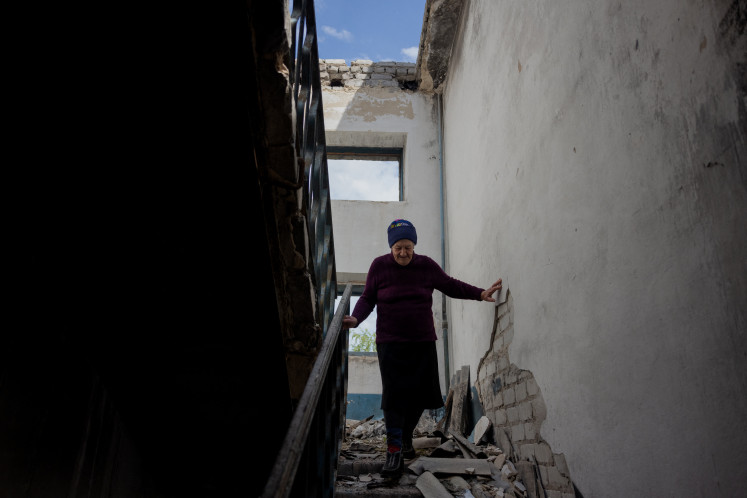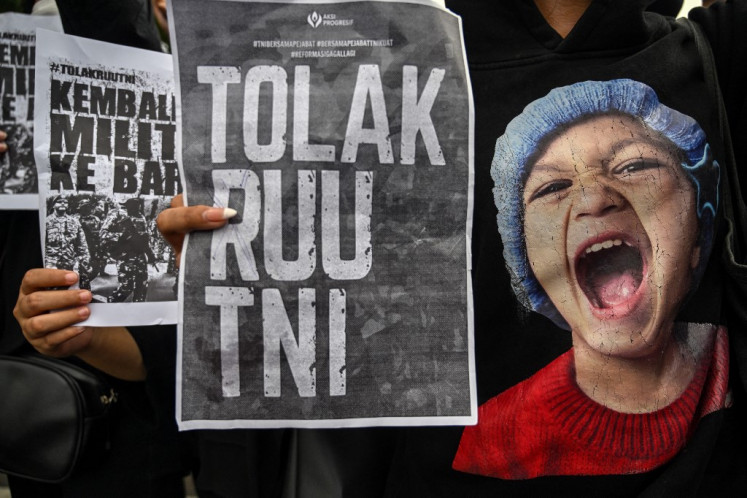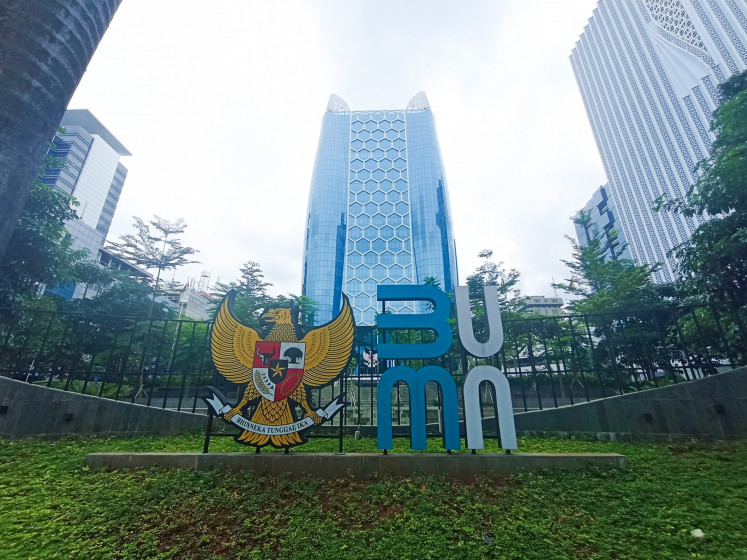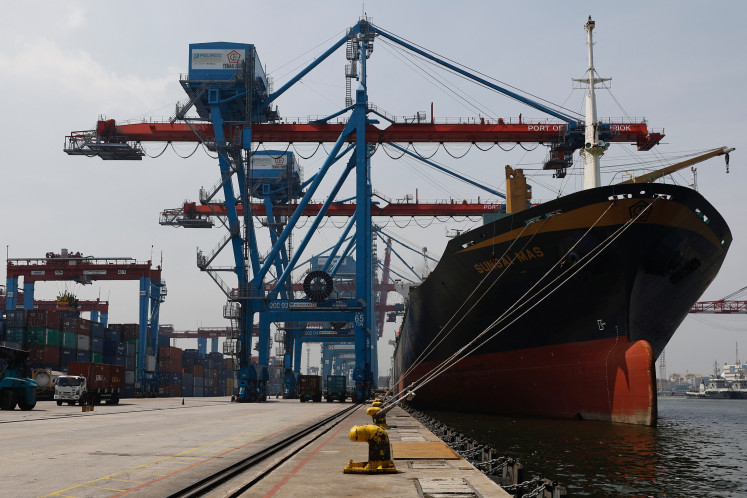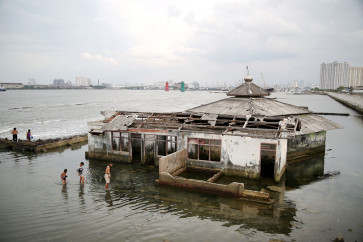Unveiling the unseen: How the AIS Forum can address ‘invisible’ displacement
Most disaster risk reduction policies around the world have been developed upon the disaster management cycle framework, which was not originally designed for slow-onset disasters like sea-level rise.
Change text size
Gift Premium Articles
to Anyone
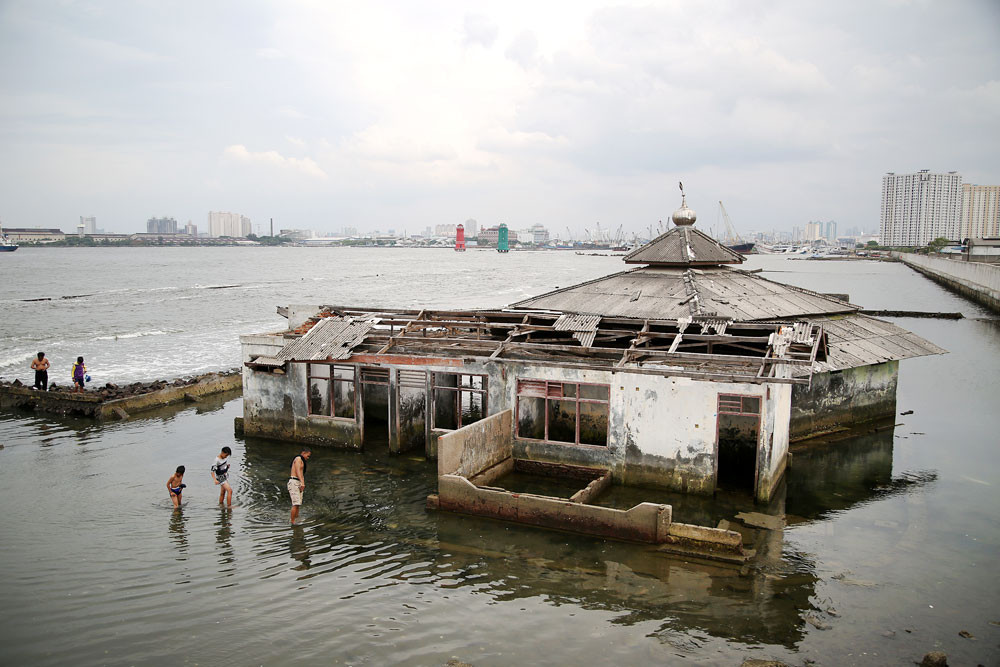 Children of Muara Baru, Penjaringan, North Jakarta look for clams near an abandoned 'mushola' (prayer house) inundated by seawater. The old embankment could not contain tidal floods in the area, inundating the prayer house located near the shore. (The Jakarta Post/P.J. Leo)
Children of Muara Baru, Penjaringan, North Jakarta look for clams near an abandoned 'mushola' (prayer house) inundated by seawater. The old embankment could not contain tidal floods in the area, inundating the prayer house located near the shore. (The Jakarta Post/P.J. Leo)
On Oct. 11, the first High-Level Meeting of the Archipelagic and Islands States (AIS) Forum concluded in Bali with the Leader’s Declaration on the Solidarity of the AIS Forum, which was endorsed by the 32 participating countries.
The declaration agreed on four key priority areas for future cooperation, which include climate change mitigation, adaptation and disaster management, with an emphasis on reducing risks related to extreme weather events. This particular key priority area could become an entry point for the AIS Forum to further advocate for the integration of climate-related mobility induced by slow-onset disasters into climate change adaptation (CCA) and disaster risk reduction (DRR) strategies.
Slow-onset disaster is characterized by its gradual development over an extended period of time. While these disasters do not typically yield immediate catastrophic impacts, in contrast to rapid-onset disasters like tsunamis and earthquakes, they can still lead to long-term devastating consequences, including displacement.
For instance, slow-onset disasters like tidal floods and sea-level rise, which are particularly pertinent to archipelagic and island countries, pose a consistent and long-term threat to the coastal regions. This may result in the eventual submersion of the inhabited areas and other disruptions to social and economic factors, which lead to the gradual displacement of the coastal population.
This gradual encroachment is already evident in various regions of Indonesia, most notably along the north coast of Java. Stretching from Muara Baru in North Jakarta to Muara Gembong in Bekasi, West Java, and further on to Timbulsloko in Demak and Tambak Lorok in Semarang, both in Central Java, these areas are experiencing the effects of rising sea levels and tidal floods.
In mid-2023, the situation became so dire that one hamlet, Simonet, located in the Central Java regency of Pekalongan, was officially erased from the district's map. The relentless inundation of this area led to the relocation of the remaining 66 households to other areas, as Simonet had become entirely submerged. Simonet was once home to approximately 200 households, whose primary livelihoods centered around fishing and flower farming. However, due to the recurrent tidal floods that began in 2005, gradual displacement had been underway, with residents steadily relocating to other areas for safety and stability.
Unfortunately, this phenomenon of gradual displacement has gone unrecorded and, as a result, remains largely “invisible” in the eyes of policymakers.






